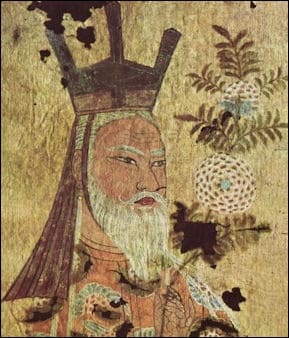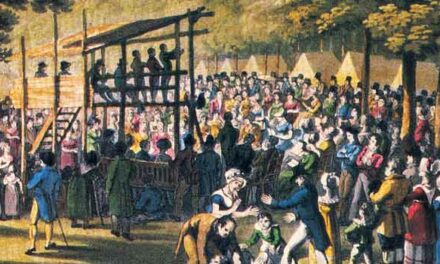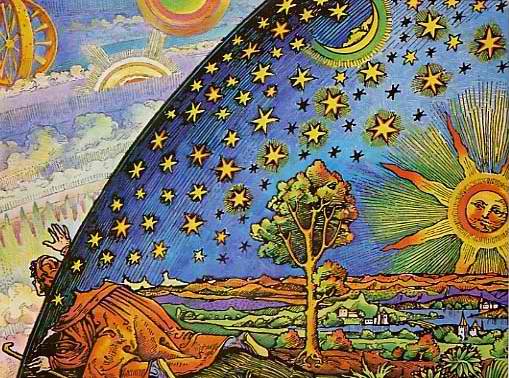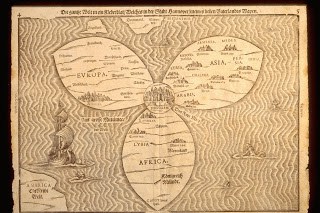This is Part 2 of our series on Rabban Sauma.
We begin with a brief review of the political scene into which Rabban Sauma’s story fits.
Trade between the Roman Empire and the Far East was established as early as the First Century. But this trade was conducted by intermediaries. No single Western merchant made the entire trek to China, nor vice-versa. Goods traveled a ways from East to West or West to East by local caravans, which deposited them at a market, to be picked up by another caravan local to that region to continue the journey. After the Fall of the Han dynasty in the 3rd Century, and the ensuing chaos of the 4th thru 6th Centuries in China, trade stopped. With the emergence of the Tang Dynasty in the 7th Century, trade resumed. Goods flowed from the Middle East to China and back. But still, no Westerner met with his Chinese counterpart. The West prized Chinese silk and porcelain, while the East wanted frankincense, myrrh, jasmine, horses, and camels. Trade increased as Chinese dynasties and Islamic caliphates grew stronger. When they were in decline, trade did as well because of increased raids by brigands and the various protection schemes of money hungry local warlords.
In these early centuries, trade flowed between Western and Eastern Asia. Europe wasn’t involved because Medieval Feudalism simply had no market for Eastern goods. That changed with Europe’s emergence from the Middle Ages and the new appetite for Eastern goods stimulated by the Crusades. The foothold Europeans established in the Outremer during that time opened routes between the Middle East and Europe that brought goods to the marketplace the newly emerging Middle Class were able to afford. It wasn’t long before silk began to adorn the wardrobe of the rich, and in a trend that’s existed since time immemorial, what the rich wear, the poor aspire to.
The Mongol conquests of the 13th Century saw an increase in trade between East & West and the first contact between Europeans and Chinese. By the end of the 1270’s the Mongols controlled more territory than any other empire in history, from Korea and South China, large parts of what would later be Russia, all Central Asia, a large portion of the Middle East and all Persia.
In the 12th Century, mythical stories of a Christian Ruler in the East named Prester John motivated a handful of Europeans to initiate contact in the hope of an alliance to back down the threat from Islam. The legend of Prester John was stoked by Christian communities in the Middle East who knew vaguely of the Nestorian Church of the East and had heard tales of a Central Asian ruler named Yelu Tashih, King of Khara Khitay who’d’ defeated the Muslims of his realm. They just assumed he must be a Christian. He wasn’t. But why let a little detail like that mess up a perfectly good story that might illicit assistance from Europeans in launching a Crusade that would lift the Muslim heel form the necks of Middle Eastern Christians?
As the Mongols moved steadily westward in the early 13th Century, King Bela of Hungary sent a Dominican emissary named Julian to learn more about what was obviously a very real threat. Julian never reached the Mongol base. He was met instead by Mongol envoys dispatched by the Mongol ruler Batu with an ultimatum of unconditional surrender and the release to the envoys of several enemies of the Mongols who’d fled to Bela for refuge.
Julian returned to Hungary with the ultimatum and an account of the Mongol army, which he said, was formidable due to its mobility. He reported it was the Mongol ambition to conquer all the way to Rome and add to their already ridiculous wealth by sacking the richest parts of Europe.
The Mongol conquest of the cream of Hungary and Poland’s elite warriors and armies in 1240 by what was just the Mongol front screen put all Western Europe on notice about the new threat from the East. But Europe as fractured and disunited. The Pope and Holy Roman Emperor were at odds over who had supremacy. The call for yet another Crusade to liberate the Holy Land from the infidel floundered due to this disunity while the Christian cities in the Outremer pleaded for assistance.
Three embassies were sent over the course of 1245 & 6 to the Mongols in an attempt to gather information about their intentions. Only one of them, lead by John of Plano Carpini was successful. He traveled all the way to the Mongol capital of Khara Khorum where he delivered a letter from the Pope, urging the Mongols to convert to Christianity and to leave off any further conquests in the West. While there, John witnessed the ascension of Genghis’ grandson Guyug to the position of Great Khan.
Why the Mongols forsook their long history as a loose collection of nomadic tribes ruled by local chieftains to a massed nation under a supreme leader is a matter for a different study and podcast. Of our interest is the liberal policy the Mongols took toward religion in the years of their early expansion. The native religion of Mongolia was shamanism. Most of the tribes were originally ruled by a chieftain in conjunction with a shaman n a power-sharing mode. But shamanism wasn’t well suited to the ruling of the settled populations the Mongols began conquering in China and the Middle East. These peoples tended to be more literate and sophisticated and needed a Faith that reflected deeper interests than shamanism could address. As a result, the Khans either adopted the predominant religion of the region they conquered, or they maintained a policy of toleration that allowed several faiths to prosper. As a result, Buddhism, Islam, and Christianity were all accepted forms of Faith in Mongol realms. What wasn’t appreciated by Mongol rulers were demands they embrace a particular faith. So the Pope’s demand he convert and forsake an invasion enraged the Great Khan Guyug. John of Plano was sent home with a letter to Pope Innocent and al Europe’s leaders to submit to the Mongols. If they balked, Guyug boasted, it would be a war the likes of which Europe had never seen.
John’s embassy to the East was a disaster. Not only had he failed to convert the Mongols, he’d managed to alienate the very people the West had hoped to ally with in a campaign against the resurgent Muslims of the Middle East. And while his mission was unfruitful, John’s written account of what he experienced in the East proved to be a major boon as it lifted the veil of ignorance the West had to the East. If the Mongols had been shrouded in mystery up to that point, the mystery was dispelled with John’s comprehensive, though at times inaccurate, description of their way of life. After John of Plano Carpini’s mission, there were several attempts by Western rulers like France’s Monarch Louis to forge an alliance with the Mongols against the Muslims. Some emissaries were official, while other missions were undertaken in a more covert fashion. Western insistence on the conversion of Mongol rulers to Christianity and Mongol intransigence on European submission were perennial sticking points. At one point Nestorian emissaries sent by The Great Khan Guyug to King Louis fabricated the lie that Guyug HAD converted and that he was married to the daughter of the fabled Prester John. Impressed, Louis sent two embassies to the Mongol court. Since Guyug was now dead, the Great Khanate became a prize rivals wrangled over; creating an impossible situation for the Western envoys when they became part of the prize being fought for.
Relations between the Mongols and Europe remained unproductive until 1256 when The Great Khan Mongke’s brother Hulegu was sent on a mission to enlarge their territory at the expense of hostile Muslim dynasties in the Middle East. It was well-known that Hulegu’s wife was an ardent Nestorian who figured prominently in her husband’s counsels. With Nestorian support, the Mongols under Hulegu captured a portion of Armenia, known then as Cilicia, and two years later overthrew the Abbasid Dynasty and entered Baghdad, executing the last Caliph. The Mongols thus became the rulers of Persia and surrounding territories of the Middle East. In 1261, Hulegu took the title of Ilkhan, meaning under-khan. The Mongol rule of wider Persia became forever after known as the Ilkhanate. It was technically subservient to the domains of the Great Khans but for all practical purposes ended up becoming just another region of Mongol dominance until a resurgent Islam was able to push out the weakening Mongols.
After the conquest of Baghdad, Hulegu’s forces continued Westward toward the Mediterranean. After taking territory in Syria, as so often happened in Mongol history, Hulegu was obliged to head home to Mongolia for the selection f the next Great Khan. His brother Mongke had died and as the tradition was among the Mongols, the next Khan would be selected by vote or the subordinate Mongol leaders, who themselves had all risen to position by merit, an innovation devised by the legendary Genghis. Before he departed for home, Hulegu appointed one of his commanders too continue the struggle against the Muslims by taking the key city of Damascus. Once Damascus fell, the rest of Syria would quickly follow. Up to this point, the Mongolian forces had seemed irresistible. But a change in Egypt meant a new state of affairs. In 1249, Turkish mercenaries of the Ayyubid dynasty revolted against their masters and established the Mamluk Dynasty. Fielding a far more powerful army, they set out to face the Mongols in Syria.
Both armies were large and the Mongols had early success. They captured Damascus but were handed a serious defeat at the famous Battle of Ayn Jalut on Sept 3, 1260. This was the Mongols first defeat in the West. The Mongol commander was killed and the Mamluks retook Damascus. They then swept the Mongols from the rest of Syria.
When word reached Hulegu of the defeat, he turned around without ever reaching Khara Khorum, rallied his defeated forces, determining to avenge his dead. Hulegu feared the Mamluk victory would embolden the Muslims under his rule in Persia to revolt. Since they were in the majority, a rebellion would prove devastating. But disunity in the Mongol world kept Hulegu from dealing with the Mamluks. To his north was his cousin Berke, ruler of the Mongol Golden Horde in what is today Russia. Berke and Hulegu were at odds with each other over the adjoining region of Azerbaijan, a rich plateau needed for the raising of their mounts, crucial for their style of warfare. Azerbaijan was also the region through which the increasingly rich East-West trade flowed, bring vast wealth. Exacerbating the tension between the cousins was Berke’s conversion to Islam. He wasn’t at all happy Hulegu had ended the Abbasid Caliphate and was now embroiled in hostilities with the Muslim Mamluks. So these two regions of Mongol dominance were at odds rather than united. With the defeat of the Ilkhanate at the Battle of Ayn Jalut, Berke allied with the Mamluk’s against Hulegu.
Joining the fray against the Ilkhanate in Persia was the Mongol realm lying to the East in Central Asia, the Chaghadai Khanate. The tensions here were the same as those between Hulegu & Berke – over territory and religion.
Surrounded by hostile realms, Hulegu sought allies to bolster his hold on Persia. Persia and the Middle East simply didn’t provide the pasturage the Mongol army required to wage effective warfare. Defeating the Mamluks and Golden Horde meant bolstering his forces with capable allies. His alliance with the ruler of Armenia provided some assistance, but Hulegu realized their addition could only forestall defeat, not attain the victory that would end the incessant conflicts.
Hulegu’s alliance with his brother, the Great Khan Khubilai was more a thing of theory than practice. In Khubilai’s contest with their other brother, Arigh Boke, for the Khanate, Hulegu backed Khubilai, but due to the distance, wasn’t able to offer anything more than verbal support. The same as now true in reverse. While Khubilai supported Hulegu and the Ilkhanate of Persia, he wasn’t able to provide any forces to the contest. The result was Hulegu’s turn to the West for allies. To defeat the Mamluks and regain Syria, he’d need Christian Europe’s help. He figured they’d be open to such an alliance since they still possessed few holdings in the Outremer after the disasters of the Crusades and a resurgent Islam. Hulegu realized the haughty demands of his predecessors would not endear Western rulers to ally with him against the Mamluks. He’d have to appeal to them as equals.
What Hulegu didn’t know about was the disunity among Europe’s rulers at the same time as such disorder in the Mongol realms. Also, the year 1260, when Hulegu began casting his net for allies to the West was only 20 years after the harrowing defeat of Hungary and Poland’s military elite at the hands of the Mongols. Europe was terrified of them. Since treachery was a standard part of Mongolian warfare, offers of an alliance would be regarded as ploys for conquest rather than sincere overtures of alliance. From Europe’s perspective, neither the Mamluks nor Mongols were a safe bet for alliance against the other. The best course was deemed as neutrality, and the hope the Mongols and Mamluks would duke it out in a war that would effectively cripple both. The Crusaders could then sweep in and take over.
But Hulegu was ignorant of these Western impulses and dreamed of an alliance with the Christian West in a campaign against the Mamluks. Once the threat to his south and west was contained, the Ilkhans would be free to deal with the Golden Horde to their Northeast. While Hulegu’s dream of a Mongol-European alliance was never realized, after his death in 1265, his successor carried on the same hope, putting feet to it in the career of the remarkable Rabban Sauma, whose tale we’ll return to in our next episode.





